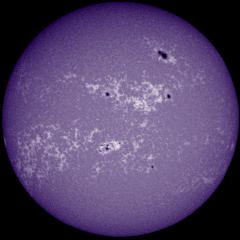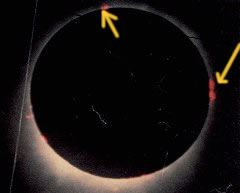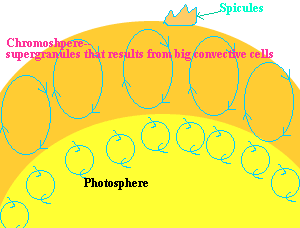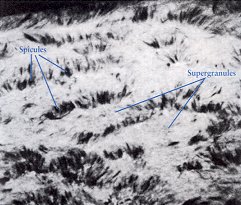The chromosphere just above the photosphere. The temperature rises from 6000 oC at the bottom of the sphere to about 20,000 oC at the uppermost.

picture src: Solar Physics
Why is it also known as "Sphere of Colour"?
During a total solar eclipse, where most of the photosphere is blocked, we will observe a reddish-pink strip around the sun. This is the "sphere of colour", the chromosphere. It is only during the total solar eclipse that we can see the chromosphere with our naked eye. At the high temperature of the chromosphere:

picture src: Universe (Fifth Edition)
Spicules
On the surface of the chromosphere, it was observed that there are lots of spicules. Spicules are vertical filaments, which are essentially hot jets of rising gases. These jet of gases rises at a speed of 20km/s, reaching a height of 10,000km and usually lasts for about 15mins. They are formed by big convective cells in the Chromosphere. This big convective cells also creates supergranules.

Approximately, 300,000 spicules can be observed at any one time, and they cover an area of about 1% of the Sunís surface.

picture src: Universe (Fifth Edition)
Pictures © of "Universe (5th Edition)", Solar Physics
Page © of GEM1506K, Group 2 (http://www.oocities.org/sg/apollonus02)